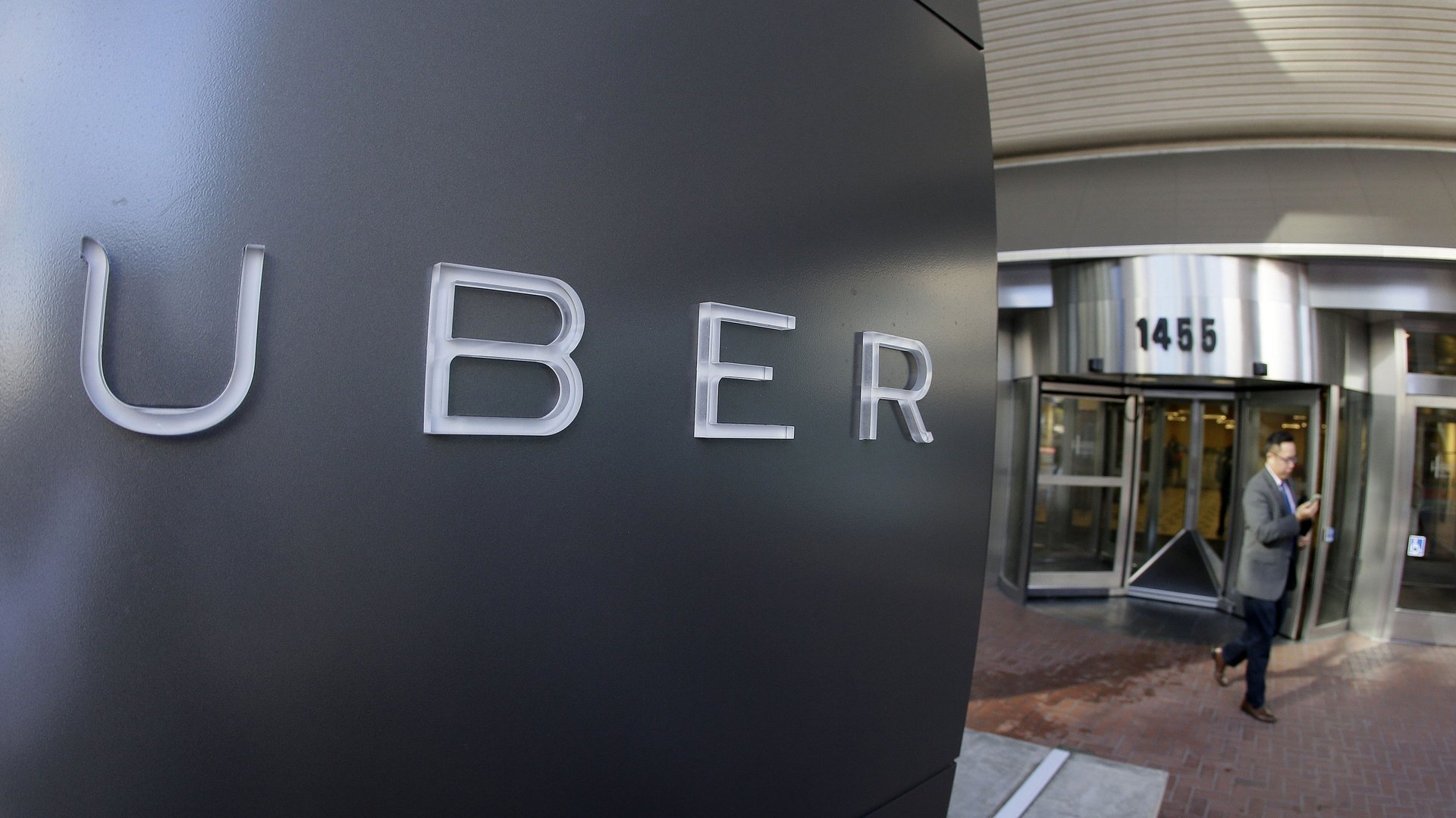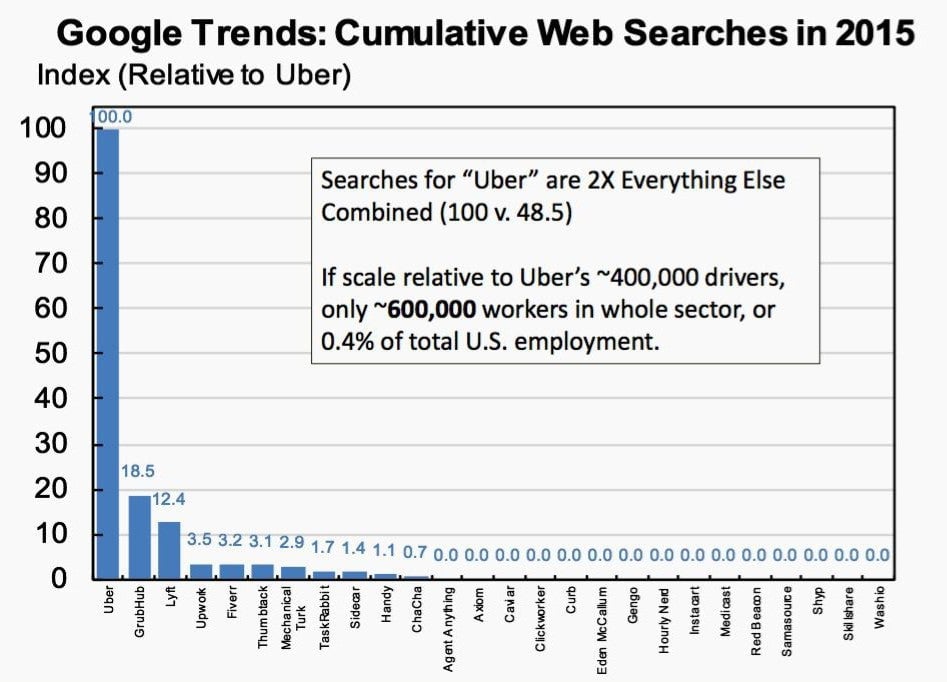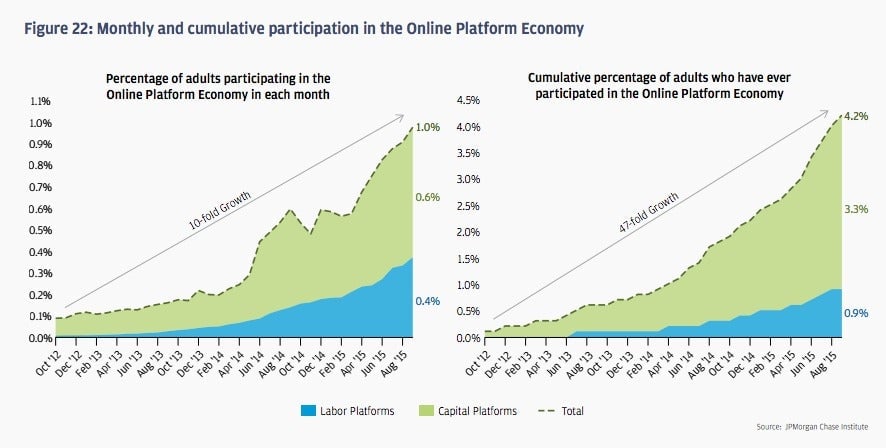There is no Uber economy, there is only Uber
Lots of names get tossed around for our new digital economy. The “gig economy.” The “sharing economy.” The “on-demand,” “platform,” “networked,” and “peer-to-peer” economies.


Lots of names get tossed around for our new digital economy. The “gig economy.” The “sharing economy.” The “on-demand,” “platform,” “networked,” and “peer-to-peer” economies.
Nothing really fits.
But maybe we should just call it the the Uber economy.
After all, Uber alone could be responsible for half to two-thirds of all gig economy work, according to forthcoming research from influential US labor economists Lawrence Katz and Alan Krueger.
In a preview of their core findings, the two describe Uber as the “quintessential employer of gig work.” They also cite Google Trends data showing that searches for “Uber” are double those for all other gig companies combined (i.e., Lyft, TaskRabbit, Handy, Instacart).

That may look massive. But overall, Katz and Krueger estimate that these new online workers represent only 0.5% of the entire US labor force. That estimate is roughly in-line with previous stabs at estimating the ranks of US workers employed as part of the gig economy. A study released by McKinsey in 2015 said such workers accounted for less than 1% of the total US working-age population. A separate study released by JPMorgan Chase earlier this year found that just 0.4% of adults make money from gig jobs in any given month.

Data showing a relatively small—though growing—employment impact for services such as Uber are just some of the early efforts to collect data on what has been a heavily hyped segment of the economy of late.
Such data will be crucial for policymakers who are increasingly being asked to change laws and regulations in an effort to accommodate popular new services such as Uber. Last year, 22 states passed laws to protect and legitimize ride-hailing, in a series of victories for Uber. The buzz has even reached Washington, where politicians right now are considering ways to revamp age-old labor policies that would accommodate gig work. Based on this new research, that might just mean accommodating Uber.